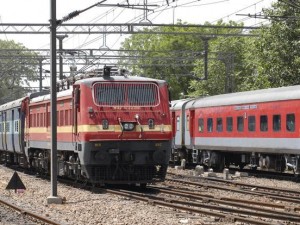Rail Land Development Authority (RLDA), a statutory body under railways ministry, has invited proposal to appoint a consultant to redevelop Bhuj railway station in Gujarat. The station will be redeveloped under public private partnership (PPP) model. The consultant will have to conduct feasibility study, finalize a detailed master planning, urban designing, engineering and preparation of a detailed project report for redevelopment of Bhuj railway station. The last date for applying for participation in the bidding process is 12 August. RLDA is redeveloping 62 stations across the country in cooperation with the government’s smart city project.
Read More »Rail fares hiked; up by 1-2 paise/km for non-AC and 4 paise/km for AC classes
Indian Railways has increased rail fares. The last fare revision over Indian Railways was done in 2014-15. For the passengers travelling in ordinary non-AC classes, there shall be an increase of 1 paisa/PKM (Passenger Kilometer), and of 2 paise/PKM for non AC mail or express trains. For AC classes, the increase is 4 paise/PKM. The increase in fare will be on tickets bought on or after 1st January 2020 and no excess fare (difference of fare) will be charged from passengers who have booked tickets before 1st January 2020. In an official statement, the Ministry of Railways said “In order to expand passenger amenities and facilities at railway stations and trains, it has become imperative to increase the fare marginally without overburdening any class of passengers. Further, the burden of 7th Pay Commission on Indian Railway has necessitated rationalisation of fares. Fare revision will help in channelising the fast modernisation of Indian Railway. Keeping the affordability concerns of daily commuters, there shall be no fare hike for passengers over suburban sections and season ticket holders. This class constitutes 66% of total passenger segment over Indian Railways. Existing fares of train services like Rajdhani, Shatabdi, Duronto, Vande Bharat, Tejas, Humsafar, Mahamana, Gatiman, Antyodaya, Garib Rath, Jan Shatabdi, Rajya Rani, Yuva Expresses, Suvidha and special trains on special charges, AC MEMU (non-suburban), AC DEMU (non-suburban) etc shall similarly be revised to the extent of the above-proposed increase in class-wise fares.”
Read More »Cabinet approves merger of rail budget with general budget
The Union Cabinet has approved the proposals of Ministry of Finance on certain landmark budgetary reforms relating to the merger of Railway budget with the General budget, the advancement of the date of Budget presentation from the last day of February and the merger of the Plan and the Non-Plan classification in the Budget and Accounts. All these changes will be put into effect simultaneously from the Budget 2017-18. The Railways will continue to maintain its distinct entity -as a departmentally run commercial undertaking as at present; Railways will retain their functional autonomy and delegation of financial powers etc. as per the existing guidelines; The existing financial arrangements will continue wherein Railways will meet all their revenue expenditure, including ordinary working expenses, pay and allowances and pensions etc. from their revenue receipts; The capital at charge of the Railways estimated at Rs.2.27 lakh crore on which annual dividend is paid by the Railways will be wiped off. Consequently, there will be no dividend liability for Railways from 2017-18 and Ministry of Railways will get Gross Budgetary support. This will also save Railways from the liability of payment of approximately Rs.9,700 crore annual dividend to the Government of India; The presentation of separate Railway budget started in the year 1924, and has continued after independence as a convention rather than under Constitutional provisions. The merger would bring the affairs of the Railways to centre stage and present a holistic picture of the financial position of the Government. The merger is also expected to reduce the procedural requirements and instead bring into focus, the aspects of delivery and good governance. Consequent to the merger, the appropriations for Railways will form part of …
Read More »Railways partners with top universities to promote railway education
In a bid to promote Railway related education and research Ministry of Railways has been taking significant steps in setting up Centres of Railway Research (CRR) in collaboration with premier Educational Institutions of India. Formal MoUs for setting up such centres have already been signed between Ministry of Railways and University of Mumbai, IIT Kanpur, IIT Madras, IIT Roorkee. Another Fifth Center for Railway Research is also in existence in IIT Kharagpur. These Centers for Railway Research are working to contribute immensely towards providing solutions for utilization of Railways assets in a more cost effective manner and its various processes towards complete customer satisfaction. To expand the areas of research further, Indian Railways have also set up the Malaviya Chair at IIT BHU, Varanasi for development of proper materials for use by Indian Railways. In addition, a ‘Chair on Sustainable Mobility’ has also been set up at TERI University, New Delhi. Railways Research arm viz., Research Design and Standards Organization (RDSO) based at Lucknow is coordinating with all the CRRs and chairs. The areas of research have also been earmarked for these different CRRs based on the core competencies of the different institutes. The assigned areas of the CRRs include: CRR, IIT Roorkee: Civil Infrastructure of High Speed Rail, Bridges and structures, Track management system, Environmental Engineering, Rail wheel dynamics, etc. CRR, IIT Kanpur : Geo-Tech Engineering, Advanced Fuel efficient systems, Fire Safety Management, Advanced electronics, High speed Rolling stock design, Advanced Signalling and Fog vision etc. CRR, IIT Madras : Structural Health Monitoring of Railway Infrastructure, Intelligent transportation, Computer vision and imaging, reliability engineering, energy management etc. CRR, Mumbai University: Research related to Heavy Haul Technology, High-Speed Technologies, Energy …
Read More » Tourism Breaking News
Tourism Breaking News

